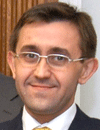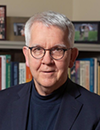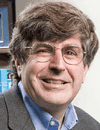08:00 | Conference Registration, Materials Pick-Up, Morning Coffee and Pastries |
|
Session Title: Conference Opening Session -- Flow Chemistry Summit 2021 and The Space Summit 2021 |
| |
08:45 |  | Conference Chair Conference Welcome and Introduction by Conference Chairperson -- Flow Chemistry: Current and Future Advances
Paul Watts, Distinguished Professor and Research Chair, Nelson Mandela University, South Africa
|
|
09:00 | Welcome and Introduction to the Space Summit 2021: Impact of Microgravity on Biological and Physical Systems
Marc Giulianotti, Program Director, International Space Station U.S. National Laboratory, United States of America
|
09:15 | NIH NCATS Tissue Chips in Space
Danilo Tagle, Director, Office of Special Initiatives, National Center for Advancing Translational Sciences at the NIH (NCATS), United States of America
|
09:45 | Bioprinting of Living Tissue Constructs For Space Exploration
Michael Gelinsky, Professor, Technical University Dresden, Germany
For long-term space exploratory missions and extra-terrestrial human
settlements, e. g. on Moon or Mars, the astronauts must be able to treat
health problems on site as a fast return to Earth is impossible. 3D
bioprinting is a promising technology which might allow fabrication of
tissue constructs like skin and bone with limited equipment and
materials which mostly could be produced locally. The presentation will
give an overview about a study on bioprinting for space exploration
which recently was carried out for the European Space Agency (ESA). We
have investigated different bioprinting technologies, suitable
biomaterials and also possible medical scenarios in which bioprinting
might become an important tool. |
10:15 | Morning Coffee Break and Networking |
10:45 |  Effect of Microgravity on Bioprinted Tissues Effect of Microgravity on Bioprinted Tissues
Nicole Diamantides, Bioprinting Field Application Scientist, CELLINK
Bioprinting can be used to fabricate functional living tissues. These tissues can be used for a variety of applications from drug testing, studying disease pathology, regenerative medicine, and more. Recently, microgravity has been utilized both for understanding how tissues will respond to space travel and as a negative control for understanding how gravitation forces affect tissue formation and disease development. Here, we will discuss how the gene expression of stem cells is affected by space flight and simulated microgravity and how simulated microgravity can be used to understand glioblastoma mechanical regulation.
|
11:15 | What Can Biofabrication do for Space and what can Space do for Biofabrication?
Lorenzo Moroni, Professor, Biofabrication for Regenerative Medicine, Maastricht University and Founder MERLN Institute for Technology-Inspired Regenerative Medicine, Netherlands
Biofabrication in space, and in particular bioprinting, is one of the novel promising and perspective research directions in the rapidly emerging field of space biomedical sciences. There are several advantages of bioprinting in space. First, under the conditions of microgravity (µg), it is possible to bioprint constructs employing more fluidic channels and, thus, more biocompatible bioinks. Second, µg conditions enable 3D bioprinting of tissue and organ constructs of more complex geometries with voids, cavities, and tunnels. Third, a novel scaffold-free, label-free, and nozzle-free technology based on multi-levitation principles can be implemented under the condition of µg. The ideal space bioprinters must be safe, automated, compact, and user friendly. Thus, there are no doubts that systematic exploration of 3D bioprinting in space will advance biofabrication and bioprinting technology per se. Vice versa 3D bioprinted tissues could be used to study pathophysiological biological phenomena, when exposed to µg and cosmic radiation that will be useful on Earth to understand ageing conditioning of tissues, and in space for the crew of deep space manned missions. Here, we provide some leading concepts on what mutual benefit can be drawn by the application of biofabrication technologies in space, and sketch a future scenario where such marriage could enable advancements in space biological programs and of our ageing society. |
11:45 | Tissue Chips in Space: Human Cartilage-Bone-Synovium Microphysiological System for Post-Traumatic Osteoarthritis
Alan Grodzinsky, Professor of Biological, Electrical and Mechanical Engineering, Director of the MIT Center for Biomedical Engineering, Massachusetts Institute of Technology (MIT), United States of America
Post-traumatic osteoarthritis (PTOA) is caused by a traumatic impact joint injury associated with an augmented inflammatory environment (such as an ACL rupture). This results in loss of cartilage and impaired joint function, severely impacting the quality of life of otherwise healthy individuals, compounded by the fact that there are no disease-modifying drugs available for OA/PTOA, only short acting pain killers that do not halt disease progression. Astronauts may be at heightened risk of altered musculoskeletal physiology, thus impacting their Space mission. With an aim of PTOA disease management on Earth and supporting astronaut health during long space missions, our overall objective has been to develop a microphysiological system (MPS) to simulate aspects of PTOA pathogenesis and progression in vitro, and to use this MPS to develop therapeutic regimens incorporating appropriate drugs and dynamic exercise loading to prevent disease progression and stimulate pro-anabolic responses. Analyses to date from ISS experiments show changes in human knee tissues indicative of the earliest events in the initiation and progression of PTOA. The effects of human variability are also under study. Use of such an MPS on earth and in LEO-based platforms could enable accelerated disease modeling, providing unique insights into disease progression and development of therapeutic interventions. Effects of altered loading of joint cartilage in space may affect the rate of cartilage breakdown leading to OA. Microgravity may uniquely enable the study of joint-disuse versus exercise in management of OA and PTOA. |
12:15 | Networking Lunch |
14:00 | One-Step Gene Sampler Tool for Genetic Analysis on ISS
Gergana Nestorova, James C. Jeffrey, M.D. Endowed Professorship in Pre-Med, Louisiana Tech University, United States of America
The aim to support an extended human presence in space has led to the
establishment of NASA’s GeneLab, which combines a database repository
dedicated to ISS biological experiments and corresponding ground-based
studies. The biggest constraints for real-time genetic analysis of
biological specimens in space are the time that is required for the
astronaut to process the sample and the reduced working area on ISS.
Because of these limitations, the number of samples that are currently
being analyzed in space is very low. The One-Step Gene Sampler tool can
significantly reduce the time required for genetic analysis on ISS and
therefore could increase the number of samples analyzed in space. This
presentation will discuss the design, application, and validation of
this technology on ISS. At the core of this tool is a microscopic pin
for the purification of nucleic acid that is analyzed by the WetLab-2
facility currently on station. The Gene Sampler tool can be used for RNA
purification at various locations of the biological sample and does not
require sacrificing of the specimen. Most valuably, the probes need no
further processing to separate RNA from the sample. The specimen’s RNA
hybridizes to the surface of the probe and no nuclear contamination
occurs. Sampling is completed after a minimum of two-minute insertion
into the specimen and the probe can be analyzed directly in the ISS
SmartCycler instrument. Instead of using the conventional liquid-based
process, the purification of genetic material now can be performed dry,
utilizing a functionalized metal pin that is compatible with the ISS
environment and analytical tools. The technology was launched on SpaceX
CRS-21 and validated by Dr. Kate Rubins in February 2021. |
14:30 | Human Multi-Tissue Platform to Study Effects of Space Radiation and Countermeasures
Gordana Vunjak-Novakovic, University Professor, Columbia University, United States of America
Cosmic radiation is the most serious risk encountered during long
missions to the Moon and Mars. There is a compelling need to understand
the exact effects of cosmic radiation, safety thresholds, and mechanisms
of various types of tissue damage, in order to develop measures for
radiation protection during extended space travel. As animal models fail
to recapitulate the exact mutational changes expected for astronauts,
engineered human tissues and “organs-on-a-chip” are valuable tools for
studying effects of radiation in vitro. We have developed bioengineered
tissue platforms in which we can study radiation damage in a
patient-specific setting. All tissues are derived from induced
pluripotent stem cells cultured for a period of 4-6 weeks and matured to
match some aspects of human physiology. We describe here the studies of
radiation effects on bone marrow (a site of acute radiation damage) and
cardiac muscle (a site of chronic radiation damage). To this end, we
investigated the effects of simulated high-LET cosmic ray exposures,
both acute and protracted, on human tissues connected by vascular
perfusion. We propose that the engineered human tissue systems can
provide test beds for radioprotective therapeutics to mitigate radiation
damage during space exploration. |
15:00 | The NATO Project: Nanoparticle-based Countermeasures for Microgravity-induced Osteoporosis
Livia Visai, Associate Professor, University of Pavia, Italy
Recent advances in nanotechnology applied to medicine and regenerative
medicine have an enormous and unexploited potential for future space and
terrestrial medical applications. The Nanoparticles and Osteoporosis
(NATO) project aimed to develop innovative countermeasures for secondary
osteoporosis affecting astronauts after prolonged periods in space
microgravity. Calcium- and Strontium-containing hydroxyapatite
nanoparticles (nCa-HAP and nSr-HAP, respectively) were previously
developed and chemically characterized. This study constitutes the first
investigation of the effect of the exogenous addition of nCa-HAP and
nSr-HAP on bone remodeling in gravity (1 g), Random Positioning Machine
(RPM) and onboard International Space Station (ISS) using human bone
marrow mesenchymal stem cells (hBMMSCs). In 1 g conditions, nSr-HAP
accelerated and improved the commitment of cells to differentiate
towards osteoblasts, as shown by the augmented alkaline phosphatase
(ALP) activity and the up-regulation of the expression of bone marker
genes, supporting the increased extracellular bone matrix deposition and
mineralization. The nSr-HAP treatment exerted a protective effect on
the microgravity-induced reduction of ALP activity in RPM samples, and a
promoting effect on the deposition of hydroxyapatite crystals in either
ISS or 1 g samples. The results indicate the exogenous addition of
nSr-HAP could be potentially used to deliver Sr to bone tissue and
promote its regeneration, as component of bone substitute synthetic
materials and additive for pharmaceutical preparation or food
supplementary for systemic distribution. |
15:30 | Afternoon Coffee Break and Networking |
16:00 |  | Keynote Presentation Drugs for Africa: Process Intensification for API Synthesis Exploiting Continuous Manufacturing
Paul Watts, Distinguished Professor and Research Chair, Nelson Mandela University, South Africa
While Africa has a variety of companies that formulate medicines, it does not have any form of pharmaceutical industry that manufactures the active pharmaceutical ingredients (APIs) with the consequence that these need to be imported. This results in increased drug costs making medications unaffordable to most patients in Africa. The current pandemic has further demonstrated supply chain issues when relying entirely on imported products.
To this effect, we are working on developing local drug manufacturing capacity in Africa using continuous flow technology, with the goal of lowering the cost of drugs, improving drug accessibility and ultimately improving Africa’s health. We are developing cost effective and efficient continuous flow synthetic processes towards a variety of drugs to demonstrate that they can be manufactured at lower cost in Africa. The presentation will give a few case studies. |
|
16:30 | Continuous-Flow Approach Towards Synthetic CBD
Rodrigo Souza, Associate Professor, Federal University of Rio de Janeiro, Brazil
Recently, CBD was included in some countries as an antiepileptic product for compassionate use in children with refractory epilepsy. With the growth in the demand of CBD, comes a need for high purity-grade cannabinoids for the emerging market. The discovery and development of approaches toward cannabidiol synthesis have emerged from the extraction of the cannabis plants to cannabinoid fermentation in brewer’s yeast successfully. Here in we present our approach towards synthetic CBD by means fo continuous-flow protocol. |
17:00 | Automated Flow Platforms with In-Built Flexibility – Radial Synthesis and Beyond
Kerry Gilmore, Assistant Professor, University of Connecticut, United States of America
Automated flow chemistry platforms have the capability to significantly accelerate and standardize the development and study of organic chemistry reactions and processes. However, one limitation of the general approach is the design of custom systems for specific targets or processes. This requires physical reconfiguration of the system to perform the next “unique” process. By decoupling sequential process steps, an incredible degree of flexibility is introduced into a multistep continuous process. This approach affords numerous capabilities unavailable in a traditional flow system. In this talk, we will discuss how automated platforms using this approach create the opportunity for one-stop systems for fully remote research and data generation. |
17:30 | New Frontiers in Flow Technology and Reaction Processes
Aaron Beeler, Assistant Professor, Boston University, United States of America
In the Beeler Research Group, we are developing new technologies and approaches that can be applied to natural product synthesis and medicinal chemistry. The lecture will highlight developments in challenging reactions which can be used to access complex small molecules which are critical in our multidisciplinary and collaborative research. A common theme in our lab is the use of flow chemistry to develop efficient reactions and processes that overcome limiting boundaries that are prevalent in batch reactions. Flow chemistry allows us to reconsider the utility of many transformations for applications in synthesis, such as photochemical reactions of cinnamates to access complex cyclobutanes and visible light excitation of pyridinium ylides to afford azepines and related analogues. I hope to demonstrate how flow chemistry provides us a tool for development of new and more efficient reactions that are robust, highly scalable, and provide access to complex and novel chemotypes. |
18:00 |  | Keynote Presentation Fluidically-Coupled Electrochemical Immunosensing of Interleukin-6 in as a Biomarker for Traumatic Brain Injury and Covid-Related Cytokine Storms
Paul Bohn, Arthur J. Schmitt Professor of Chemical and Biomolecular Engineering and Professor of Chemistry and Biochemistry, University of Notre Dame, United States of America
A highly sensitive, label-free immunosensing platform based on interdigitated electrode arrays (IDEAs) has been developed for the detection of IL-6, a critical cytokine biomarker for inflammation and trauma. The IL-6 IDEA sensor exhibits a LOD in PBS that is comparable to other label-free sensors and ELISA-based electrochemical immunosensors, and it achieves linear ranges at IL-6 concentrations across 4 orders of magnitude for all fluids. Thus, the IL-6 IDEA sensor is an excellent candidate for clinical application as a POC tool, given its simple assembly, ease of operation, straightforward analysis, and good sensitivity for IL-6 in physiological fluids. Furthermore, preliminary experiments on non-optimized structures show that operation in generator-collector redox cycling mode can produce significant amplification factors. The performance of the IL-6 IDEA sensor was also explored in both CSF and serum. The IDEA sensor is less sensitive to IL-6 in CSF and serum than in in PBS, which is expected due to the presence of interferents, such as cellular debris, proteins, lipids, etc. Although LODs in CSF and serum were higher, the IL-6 IDEA electrochemical immunosensor can reliably detect IL-6 across 4 orders of magnitude at clinically relevant concentrations in CSF and serum. CSF is the preferred physiological fluid for biomarker detection due to its exceptionally low concentration of non-target interferents relative to blood plasma or serum. |
|
18:30 | Challenges and Benefits of Implementing Integrated Continuous Manufacturing (ICM) Beyond the Laboratory
Bayan Takizawa, Chief Business Officer, CONTINUUS Pharmaceuticals, Inc., United States of America
Recently, there has been increased interest in the application of continuous manufacturing to pharmaceuticals. The advantages are undeniable, as many other industries have evolved their production systems, enjoying the improved efficiencies and lower costs associated with continuous manufacturing. Pharma, conversely, has been slower to adapt, clinging to outdated batch methods and fragmented supply chains that are vulnerable to disruptions, which ultimately impact patient care. Fortunately, more and more companies are embracing continuous manufacturing, several receiving approvals of continuously produced drug products in recent years. This presentation will focus on some of the challenges in implementing continuous manufacturing in the pharma industry, but also show why change is imminent. Regulatory, quality, cultural, and other relevant factors will be discussed. |
19:00 | Close of Day 1 of the Conference |





